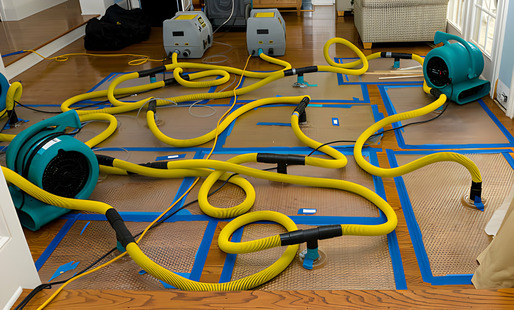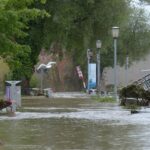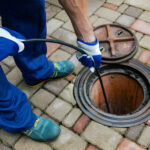
Water damage can strike unexpectedly, wreaking havoc on homes and businesses. When faced with the aftermath of a flood or leak, choosing the right water damage restoration equipment is crucial for an effective and efficient recovery process. In this comprehensive guide, we’ll explore the key considerations and factors to help you make informed decisions when selecting equipment for water damage restoration.
Water damage is a common and disruptive problem that can result from various sources such as floods, burst pipes, or leaks. Dealing with the aftermath requires a strategic approach, and having the right equipment is paramount. As you embark on the journey of restoring your space, understanding the intricacies of selecting water damage restoration equipment becomes essential. This guide will walk you through the vital aspects to consider, empowering you to make informed choices for a seamless restoration process.
See also our post on A Comprehensive Guide on How to Save Clothing from Water Damage
Understanding the Nature of Water Damage
Before delving into the selection of restoration equipment, it’s crucial to understand the different types and severity of water damage. This knowledge will guide your choice of equipment, ensuring it aligns with the specific needs of your situation.
- Classify the Water Damage: Recognize whether the water damage is clean, gray, or black water. Clean water originates from sources like pipes or rain, while gray and black water contain contaminants and pose health risks.
- Assess the Severity: Determine the extent of the damage by assessing affected areas. Understanding whether it’s localized or widespread will influence the scale and type of equipment needed.
- Identify Materials Affected: Different materials react differently to water damage. Identify if the damage has impacted porous materials like drywall or non-porous materials such as tiles. This knowledge guides the selection of appropriate drying and restoration equipment.
- Evaluate Structural Damage: Check for any structural damage caused by the water. Understanding the integrity of the building or space is crucial for safety and effective restoration.
- Consider the Duration of Exposure: The longer the materials are exposed to water, the more severe the damage becomes. Consider the duration of exposure when selecting equipment to address potential secondary issues like mold growth.
Choosing the Right Water Damage Restoration Equipment
Now that you have a grasp of the nature and extent of water damage, it’s time to explore the factors that contribute to choosing the right restoration equipment.
- Air Movers: These are essential for accelerating the drying process by promoting air circulation. Consider the size and power of air movers based on the affected area. Multiple smaller units may be more effective than a single, larger one in certain situations.
- Dehumidifiers: Controlling humidity is crucial in preventing secondary damage like mold growth. Choose dehumidifiers based on their capacity, taking into account the volume of the affected space. Additionally, consider whether refrigerant or desiccant dehumidifiers are more suitable for your specific needs.
- Moisture Meters: Accurate moisture measurement is key to determining the progress of the drying process. Invest in quality moisture meters to assess the moisture content in various materials, guiding your decisions on when to cease drying efforts.
- Water Extraction Equipment: Efficient water extraction is vital for removing standing water quickly. Opt for submersible pumps or wet/dry vacuums with adequate suction power. Consider the type of water being extracted and choose equipment designed to handle potential contaminants.
- Infrared Cameras: These tools assist in identifying hidden pockets of moisture within walls or ceilings. By detecting temperature variations, infrared cameras provide a comprehensive view of the affected areas, aiding in targeted drying efforts.
See also our post on A Comprehensive Guide on How to Save Clothing from Water Damage
Budget Considerations and Cost Efficiency
Understanding the financial aspects of water damage restoration equipment is crucial for making decisions that align with your budget while ensuring effective restoration.
- Total Cost of Ownership: Consider not only the initial purchase cost but also factors like maintenance, energy consumption, and longevity. A slightly higher upfront cost may be justified by long-term savings.
- Rental vs. Purchase: Evaluate whether it’s more cost-effective to purchase or rent equipment. For one-time restoration needs, renting might be a viable option, while frequent incidents may justify investing in permanent equipment.
- Energy Efficiency: Energy-efficient equipment not only reduces operational costs but also minimizes the environmental impact. Look for Energy Star ratings and inquire about the energy consumption of the equipment you’re considering.
- Warranty and Support: Assess the warranty and support options provided by the equipment manufacturer. A reliable warranty and accessible customer support can save you money in the long run by ensuring timely repairs and replacements.
- Training and Certification: Factor in the cost of training your personnel on the proper use and maintenance of the equipment. Well-trained staff can contribute to the longevity and efficient operation of the tools, minimizing the risk of costly mistakes.
Safety Considerations in Equipment Operation
Ensuring the safety of individuals involved in the restoration process is paramount. Understanding the potential hazards associated with water damage restoration equipment is crucial for a secure working environment.
- Electrical Safety: Water and electricity don’t mix. Prioritize equipment with proper grounding and insulation to minimize the risk of electrical shocks. Regularly inspect cords and plugs for any signs of damage.
- Proper Ventilation: Many restoration activities release airborne particles and contaminants. Ensure adequate ventilation in the affected area to safeguard the health of restoration professionals and occupants.
- Equipment Placement: Position equipment strategically to avoid tripping hazards and to allow for efficient operation. Keep pathways clear and ensure that power cords are secured to prevent accidents.
- Personal Protective Equipment (PPE): Equip restoration personnel with appropriate PPE, including gloves, goggles, and respirators if necessary. This safeguards against potential exposure to contaminants and ensures a safer working environment.
- Emergency Preparedness: Have emergency protocols in place, including knowledge of emergency exits, first aid kits, and communication plans. Being prepared for unforeseen circumstances enhances the overall safety of the restoration process.
Environmental Considerations
Water damage restoration has environmental implications, and choosing equipment with eco-friendly features can contribute to sustainable practices.
- Green Certification: Look for equipment with recognized environmental certifications, indicating adherence to eco-friendly standards. Green certifications ensure that the manufacturing and operation of the equipment have minimal environmental impact.
- Recyclability: Consider the recyclability of the materials used in the equipment. Choosing products with components that can be recycled at the end of their life cycle promotes sustainability.
- Chemical Usage: Some restoration processes involve the use of cleaning agents and chemicals. Opt for equipment that minimizes the use of harmful chemicals or choose eco-friendly alternatives to reduce the environmental impact.
- Energy Consumption: Select equipment with energy-efficient features to minimize overall energy consumption. Lower energy use not only reduces operational costs but also decreases the carbon footprint associated with restoration activities.
- Disposal Considerations: Plan for the proper disposal of equipment at the end of its life cycle. Check with manufacturers about disposal options or recycling programs to ensure responsible waste management.
See also our post on A Comprehensive Guide on How to Save Musical Instruments from Water Damage
Conclusion
Choosing the right water damage restoration equipment is a critical step in the recovery process. By understanding the nature and severity of water damage, considering budgetary constraints, prioritizing safety, and incorporating environmental considerations, you can make informed decisions that lead to efficient and effective restoration. Remember, each situation is unique, and tailoring your approach to the specific needs of your space ensures a successful restoration journey. With the right equipment in hand, you can navigate the challenges of water damage and restore your home or business to its pre-damage condition.





